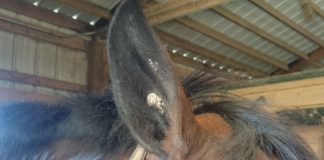Cushing’s syndrome (hyperadrenocorticism)
What it is: Cushing’s, now called Pituitary pars intermedia dysfunction (PPID), is a disease caused by a benign tumor in the pituitary gland, which controls the entire endocrine system. It usually occurs in older horses but occasionally affects younger ones as well.
What to do: Cushing’s syndrome is not usually an emergency, so call your vet during regular clinic hours. If your horse suddenly develops signs of laminitis, call your vet immediately.
Outlook: Cushing’s syndrome isn’t curable, but it can be managed with medication and other measures, such as dietary changes and year-round body clipping.
Back to Horse Health Glossary
This article originally appeared in the 2012 issue of Horses USA.





